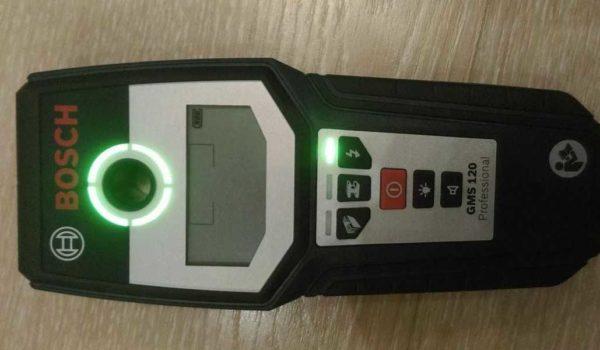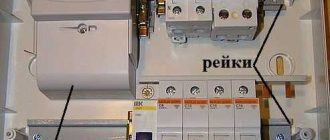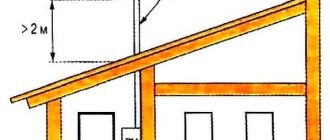During renovation, remodeling, or even when you need to drill a hole in the wall, it is desirable to make sure that there is no wiring, fittings or pipes in this place. All this can device to detect hidden wiring. This is a small and relatively inexpensive device that weighs from a force of 200 grams, but it can help quite tangibly: to get during repair in a pipe with water or wiring, to put it mildly, unpleasant.
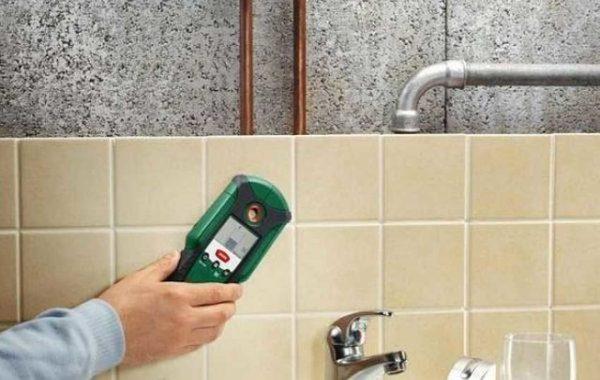
Article Content
Types of hidden wiring detection devices
There are several types of hidden wiring detection devices. They work based on different phenomena and serve different purposes.
Talking about the types of devices, let’s start with what this equipment is called. The official name is a device for detecting hidden wiring. They can be called: detector, indicator, signaling device, finder, determiner, tester. In general, there are a lot of names, but the essence is the same. These devices (some of them) can find hidden in the wall wiring, frame (metal or wooden), metal or plastic pipes.
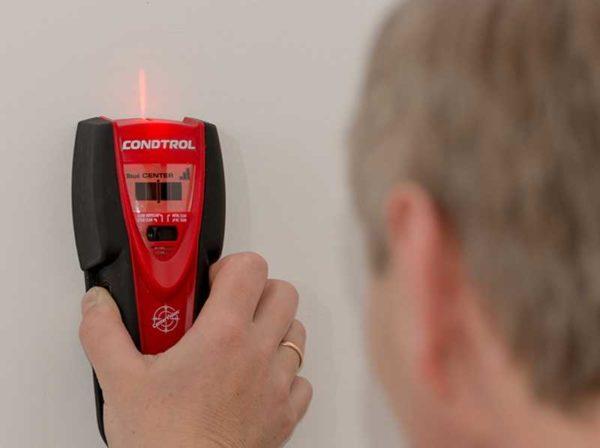
Metal detection in the wall
There are detectors of wiring, armature, metal frames, which are miniature metal detectors. They create a magnetic field around themselves, to which the hidden metals in the wall react. They detect any metal, whether it’s a screw, a water pipe or wiring.
These devices are usually inexpensive, many can pinpoint locations in the wall quite accurately, and some can even locate under the floor (with sufficient detection range). The disadvantage is that with the abundance of metals, it is difficult to determine where anything is located. For example, in a reinforced concrete wall to determine where the rebar, and where the wiring. To be precise, having a device to detect wiring of this type, it is simply impossible.
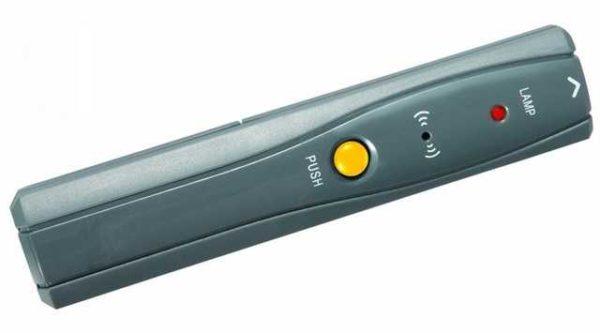
Some models of devices-metal detectors can determine not only metal, but also wood or plastic hidden in the wall. They work on a different principle – determine the density of materials by the speed of passage of pulses. These are already quite complex devices are more expensive, most often have a liquid crystal display, which displays information about what exactly is found in the wall.
Wiring detectors
There is another type of equipment for finding wiring – detectors (also called testers or indicators). These devices react to the electromagnetic field, which creates a current that passes through the conductor. That is, this type of device is good at determining the presence of wiring under load or voltage. If the conductor is broken or it is necessary to find a pipe or metal frame, wiring detectors will be useless.
These devices have another disadvantage – they are useless on wet walls, as they signal almost constantly. Wet walls “respond” to the electromagnetic field of the device, making it constantly ring.
Universal devices
Since work often requires both types of equipment, a universal device for detecting wiring was created. Such equipment usually has several modes of operation – for metal detection in general and separately for the search of wiring. These modes come with different degrees of sensitivity – to determine the exact location of the found communications with the wall.
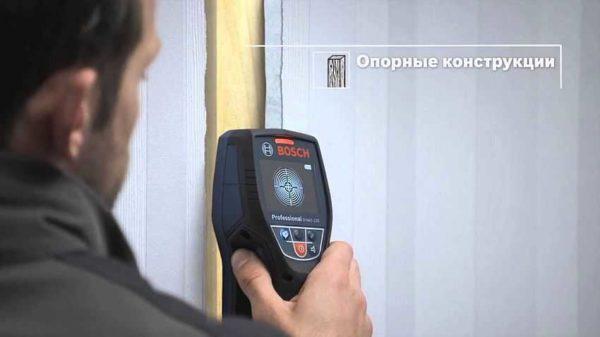
Usually such a device for detecting hidden wiring belongs to the class of professional equipment or proluprofessional. They usually work more accurately, but also cost many times more expensive. It is also worth noting that some models (in particular BOSCN DMF 10 Zoom) require presetting. Before it can be used for its intended purpose, it must be turned on and held against the wall for some time. And there should be no voids, metal and other inhomogeneities in the wall. After such an adjustment, the device identifies everything very well, but if you work with it immediately after turning it on, it shows nonsense.
Features and disadvantages
There are several points common to all devices for searching for hidden wiring. Only they manifest themselves to a different extent – in cheap models more, in expensive models – less. So here are the problems:
As already said, these phenomena are less, the higher the class of the device. So when working, always remember that there may be errors and work carefully and certainly with the power off.
What to pay attention to when buying
First you need to decide on the set of functions that you need. If you only need to find wiring, an inexpensive detector will do the job. If you also have to identify frames or pipelines, you will need a bigger device.

Scanning depth
When buying, pay attention to what materials can determine this model, to what depth these materials can be located. Cheap models are usually looking for a depth of 20 mm, which is clearly not enough – the layer of plaster is usually more – about 30-40 mm. In general, it is desirable to “see” the device to detect hidden wiring as deep as possible. True, such models are more expensive.

Type of indication
It will be necessary to determine the type of indication. It comes in three types:
In general, you should get used to any detector – to study what signals it gives when approaching each type of “finds”. To do this, you should first check the reaction on exposed wires, fixtures, wood, then try to find hidden in the wall or floor. In addition, before starting work, it is desirable to do the unbelievable – to read the instruction manual. This usually helps to learn how to handle the device faster.
Test in the store
Before buying the selected model, test it. As an object, you can use any wire that goes to the appliance. See if the declared scanning depth corresponds to the real one – try to “find” the wire at different distances from it, cover it with a board, a piece of plastic, etc., repeat the attempts. If all tests are passed normally, you can buy.
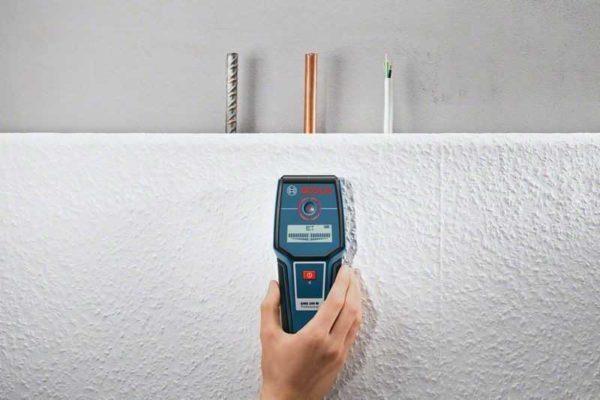
Best options
In this section, we tried to collect the most successful models of hidden wiring detectors according to reviews. As usual, there are sometimes opposite reviews for the same model. We tried to select those that have a number of positive reviews significantly exceeds the negative ones.

Wire Detector Woodpecker
This device is produced in Ukraine, costs relatively little 25-30$. Received three times more positive ratings than negative. It can be used to find conductors under voltage. When working light do not turn off, and it is desirable to load the network with something (for example, turn on the lamp). Detects live wires successfully, but if the conductor is stacked in a plastic pipe, it does not see it.
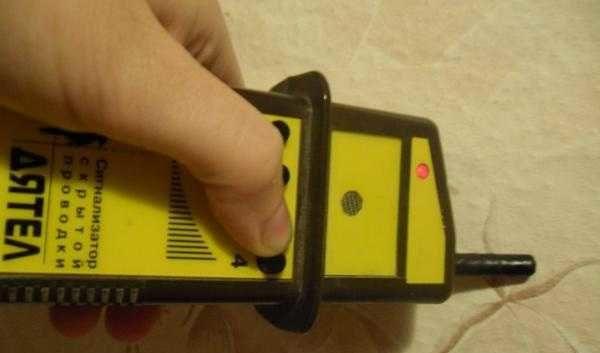
The Woodpecker hidden wiring detection device has four sensitivity modes:
- determines the location of the conductor with an accuracy of 10 mm;
- up to 100 mm;
- up to 300 mm;
- up to 700 mm.
That is, you should start work by turning on the 4th mode. When approaching the conductor, the LED starts blinking and a beeping sound is heard. The closer to the conductor, the more frequent the flashing, the louder the sound. Having found out the boundary of the most intense signals we put a mark on the wall. Repeat the operation on the other side. Then we switch the mode and start searching from the already marked boundaries. So, gradually, we find the location of the conductor with an accuracy of 1 cm in both directions.
Bosch DMF 10 Zoom
This device has an LCD monitor and two modes of operation: detecting metal (magnetic and non-magnetic), wood and wiring. There is a Zoom mode to increase the sensitivity of the device. But its inclusion leads to the fact that the detector begins to react not only to the wiring, for example, but also to metal posts or bars of rebar located nearby.
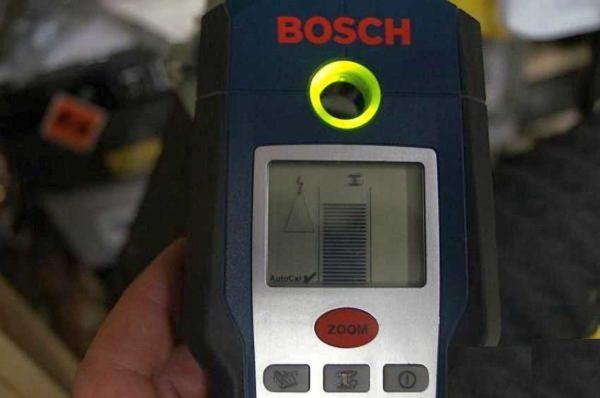
When approaching the object you are looking for, a sound and light indication are activated. On the screen of the device is lighted scale, on which you can determine how close the device is to the conductor – the closer, the more colored bars on the scale.
The display also shows graphic images of the found materials:
- a crossed-out magnet means a non-magnetic metal (aluminum, for example);
- a lightning bolt with divisions means live wiring;
In order to be able to find objects normally, it is necessary to study the operating instructions. There are many nuances described there, which will allow you to correctly interpret various situations and do not make mistakes when working.
Detect hidden wiring Bosch GMS-120
Another detector of the famous firm. In addition to wiring and metals, it looks for wood. There are three modes of operation:
- metals magnetic and non-magnetic;
- wiring;
- wood.
Has good reviews, from the previous variant differs from the previous one in the absence of the Zoom function. But in the middle of the body there is a hole through which you can mark on the wall the place where the conductor passes or vice versa, a place free of all kinds of metal – for safe drilling in the wall, ceiling or floor.
From all the reviews, several practical recommendations can be deduced:
- if the device “rings” all over the wall, touch the second hand to the wall (remove the flooding), it will work normally;
- if you don’t understand the readings, read the manual, everything is clearly described there – in what cases to use what modes.
In general, with some experience, you can quite accurately determine where the wiring is located.
Device POSP 1
The product of domestic production is good in that it allows not only to detect live wiring. It can even find a broken wire in the wall. To do this, the switched on device should be led along the conductor. As long as the wire is intact, the light indication is on. In the place where the indicator will go out and there will be a break. To be sure, carry out a similar operation on the other side (you can repeat the test twice).
This device costs a little – 20-25$, but its popularity is not very high, there are no reviews.


